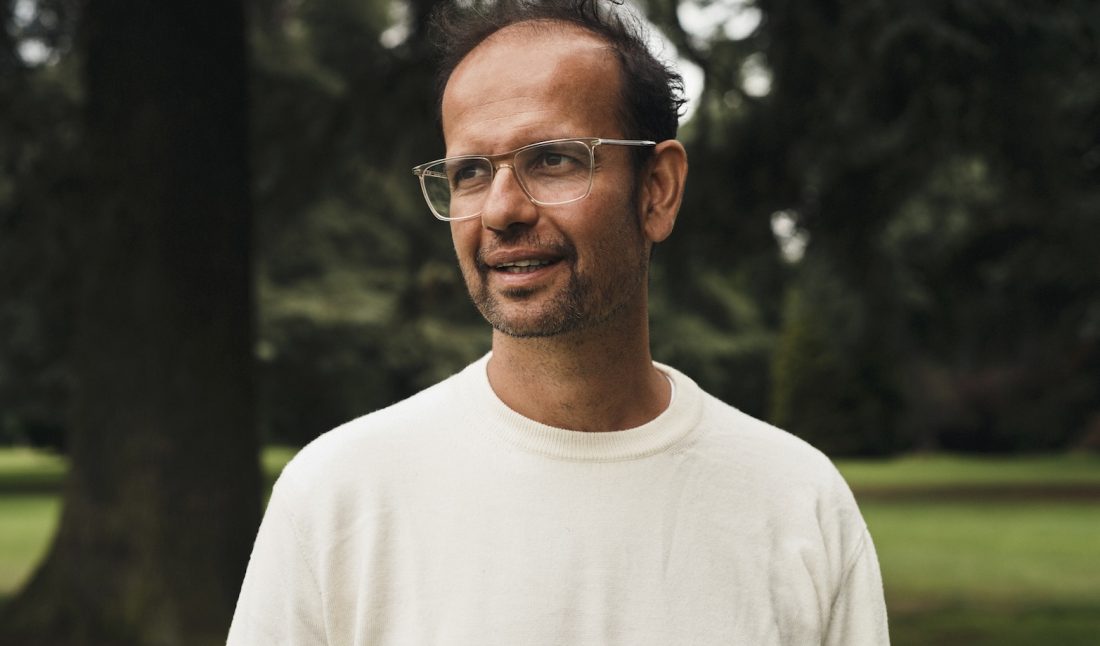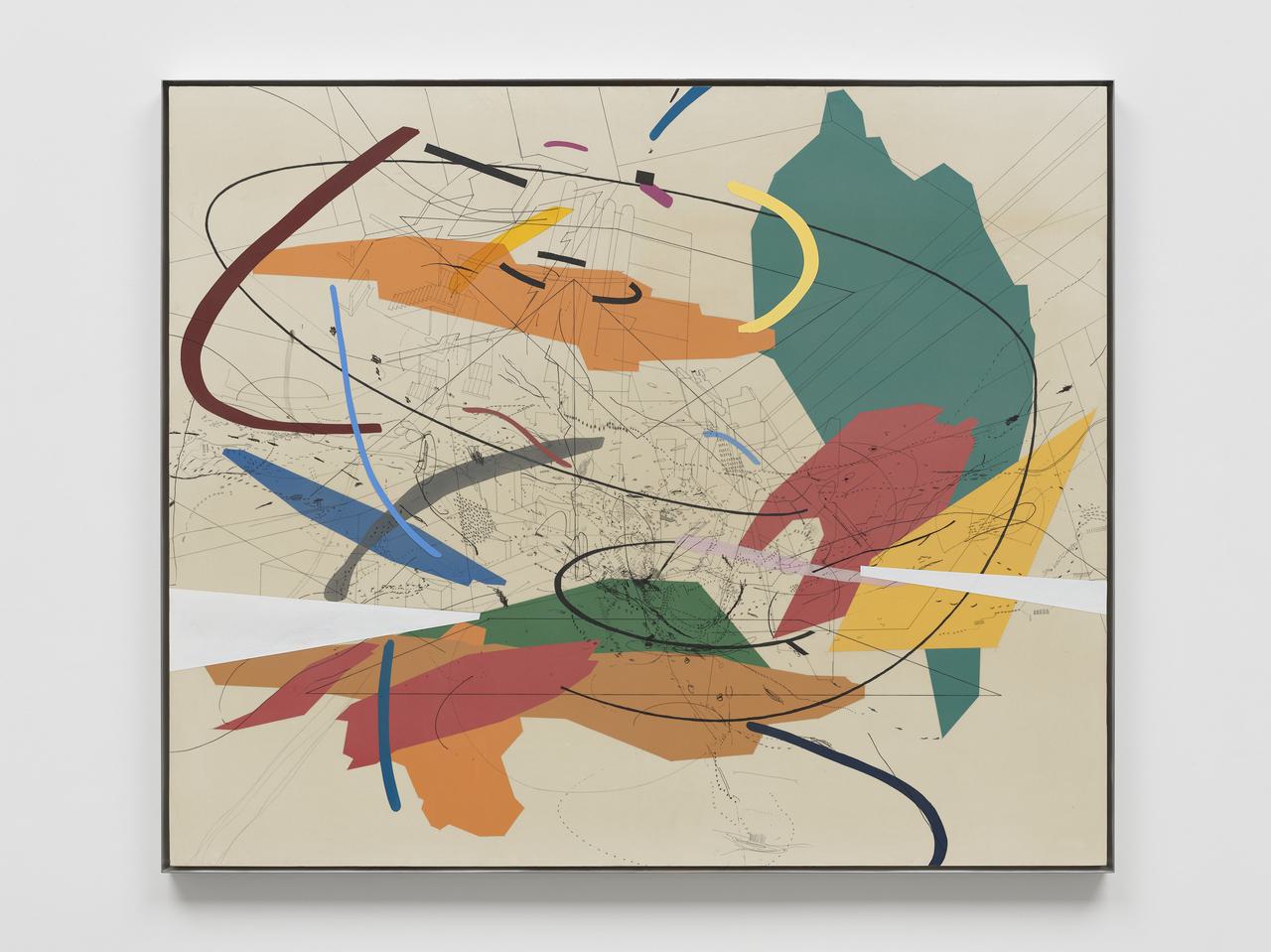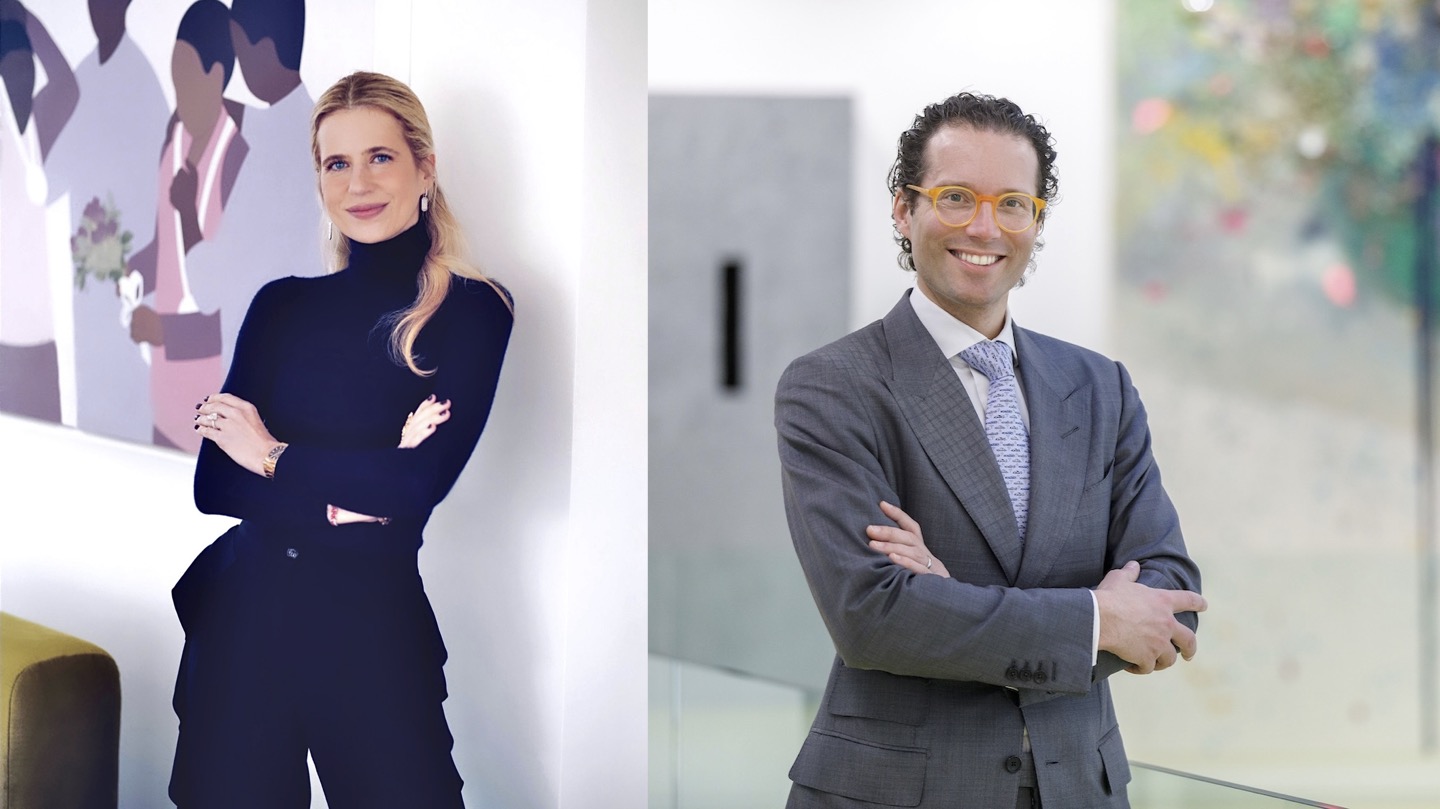In a room filled with the resonant echoes of Beethoven’s timeless symphonies, two performers sing gracefully, their voices harmonizing with the intricate melodies. “This Joy”, an artistic contribution by Tino Sehgal, is part of the Fondation Beyeler’s transformative summer exhibition, which he also played a significant role in conceptualizing and designing. This unique showcase, featuring multiple evolving titles such as “Cloud Chronicles” and “Echoes Unbound,” among others, redefines the visitor experience. Here, the boundary between art and audience dissolves as the singers, immersed in their live vocal performance, interact subtly with visitors through smiles, gentle gestures, and dance. This immersive, ephemeral experience epitomizes Sehgal’s pioneering approach to art—one that prioritizes human connection and the present moment over static displays and material artifacts.
Renowned for “constructed situations” that defy traditional boundaries, Sehgal invites viewers into transient, interactive moments that blur the lines between dancer and audience and between natural and constructed environments. As part of this groundbreaking exhibition at Fondation Beyeler, Sehgal brings his visionary approach to the museum, creating a dynamic interplay that challenges conventional notions of art and its presentation.
Sehgal’s oeuvre is marked by a distinctive focus on live, embodied interactions, where the artwork exists solely in the moments of its execution. His notable works, such as “This Progress” at the Guggenheim Museum and “These Associations” at Tate Modern, exemplify his ability to transform the art-viewing experience into a participatory event. In “This variation”, presented at dOCUMENTA (13), Sehgal expanded the frontiers of sensory perception and engagement in a darkened room filled with performers singing, dancing, and conversing. These works, devoid of physical artifacts, emphasize the value of human presence and interaction, making each encounter unique and unrepeatable.
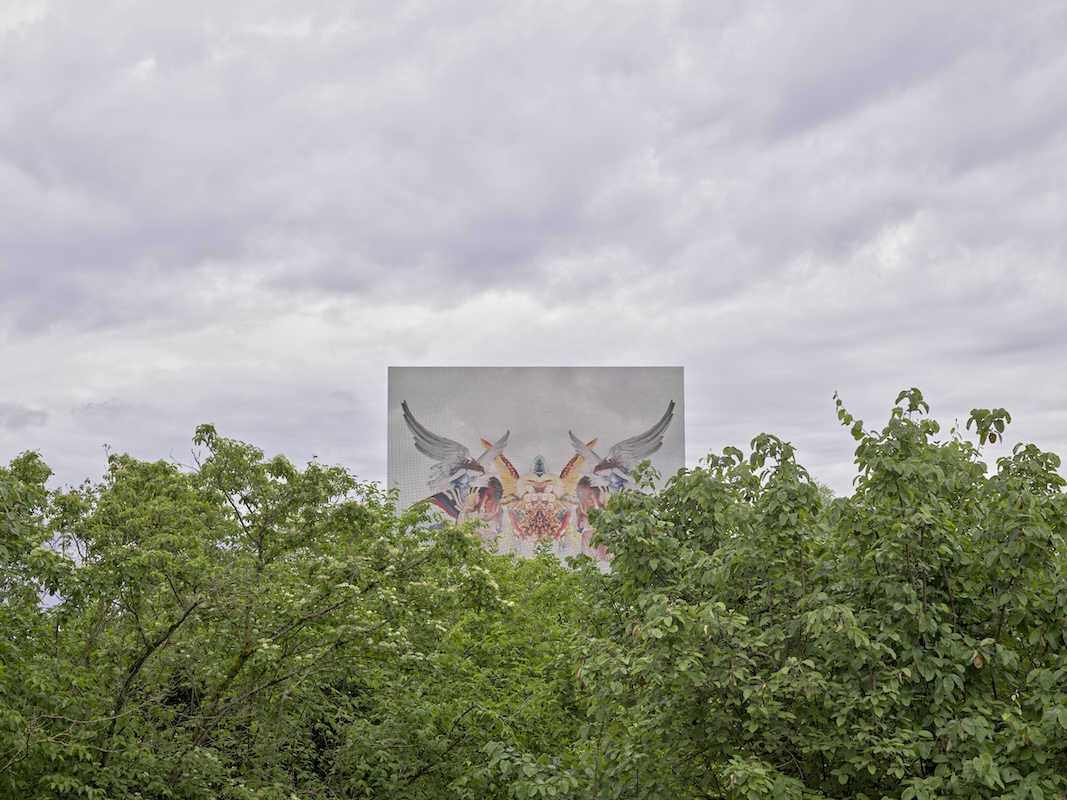 Installation view of Fondation Beyeler, Riehen/Basel, 2024, of Dominique Gonzalez-Foerster, “Untitled (nuage),” 2024 LED screen, courtesy of the artist © Dominique Gonzalez-Foerster, photo by Mark Niedermann.
Installation view of Fondation Beyeler, Riehen/Basel, 2024, of Dominique Gonzalez-Foerster, “Untitled (nuage),” 2024 LED screen, courtesy of the artist © Dominique Gonzalez-Foerster, photo by Mark Niedermann.
In this insightful interview, we explore Sehgal’s essential contributions to the conceptualization and design of the Fondation Beyeler’s latest exhibition. We delve into his creative methodology, his perspectives on the changing art market, and the significant impact of his ephemeral creations in a digital age. We examine how his living art reshapes the visitor experience, encouraging a deeper engagement with the present moment and inviting everyone to partake in the artistic process.
Tino Sehgal’s “Streaming From Our Eyes” at Fondation Beyeler
WHITEWALL: Your work for the Fondation Beyeler’s “Streaming From Our Eyes” exhibition integrates seamlessly with both indoor and outdoor spaces. How do you negotiate the boundaries between natural and constructed environments in your created situations?
TINO SEHGAL: Are we discussing the exhibition as a whole or my work specifically? The exhibition itself was developed by Sam Keller, Mouna Mekouar, Isabela Mora, Hans Ulrich Obrist, Precious Okoyomon, Philippe Parreno, and myself. I joined the project relatively late, more in the capacity of the exhibition designer.
The relationship between inside and outside is significant. Once I became more involved in the discussions, I stressed the importance of this. The works by Dominique Gonzalez-Foerster, Philippe Parreno, Precious Okoyomon, and Fujiko Nakaya are all in the surrounding park, with some also visible from inside. Traditionally, museums are bastions of culture, extremely controlled environments where nothing from the natural world should intrude. In that sense, utilizing the entire Beyeler site, not just the museum building, deemphasizes this stark opposition between nature and culture.
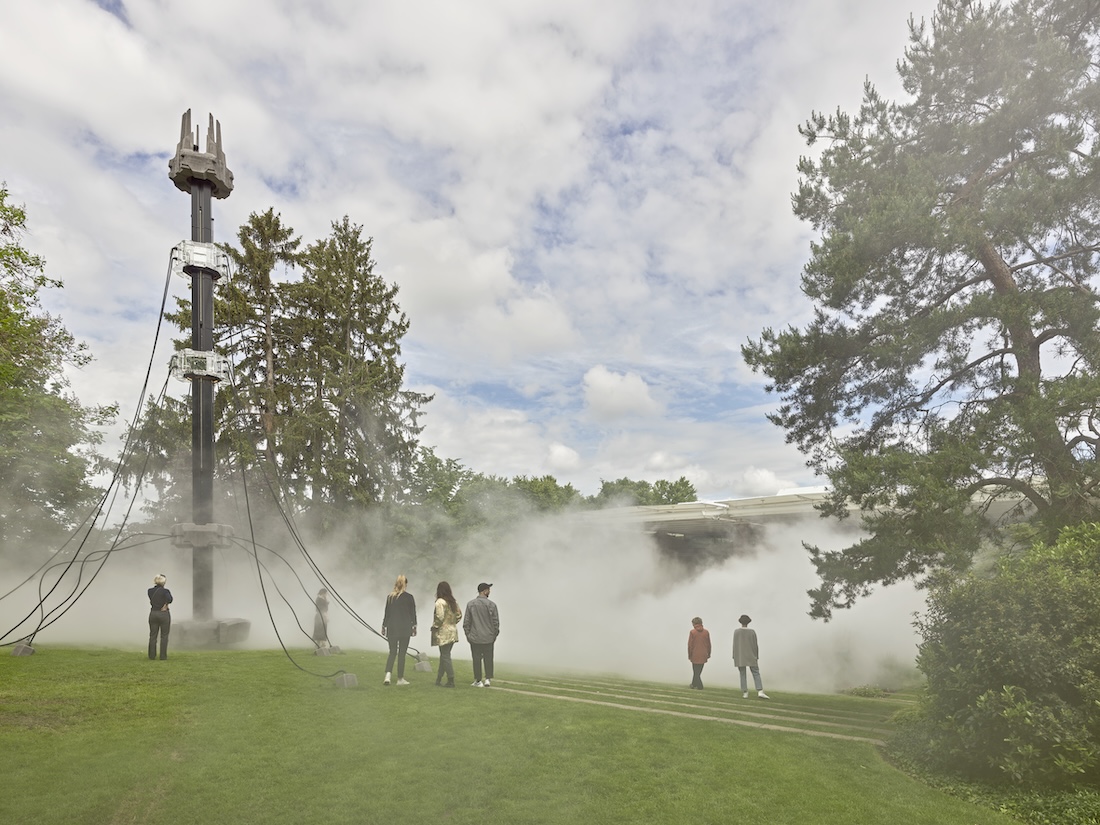 Installation view at Fondation Beyeler, Riehen/Basel, 2024. Philippe Parreno, “Membrane”, 2023; courtesy of the artist © Philippe Parreno. Fujiko Nakaya, “Untitled”, 2024; courtesy of the artist © Fujiko Nakaya. Photo: Mark Niedermann.
Installation view at Fondation Beyeler, Riehen/Basel, 2024. Philippe Parreno, “Membrane”, 2023; courtesy of the artist © Philippe Parreno. Fujiko Nakaya, “Untitled”, 2024; courtesy of the artist © Fujiko Nakaya. Photo: Mark Niedermann.
Tino Sehgal Crafts Ephemeral and Immersive Art Experiences
WW: With regards to your indoor installation featuring the singers, could you please comment on that?
TS: Certainly. I’m glad to speak with you and Whitewall, as your publication seems to bridge various cultural contexts. However, I understand that my work isn’t easily conveyed through video or photos; it’s something that needs to be experienced directly. In this particular piece, two dancers occupy a room, singing segments from Beethoven’s symphonies and improvising between these parts. They also engage in dance, mostly moving one body part at a time—such as the head, arm, or torso. While doing that, they subtly interact with visitors through gestures like smiling or sitting next to them. The starting point for this work was my realisation that, after working in this field for some time, I have three modalities: singing, dancing, and interacting/speaking. I usually work with two of these at a time, so I thought, why not integrate all three? If you felt that interaction, then the piece has somewhat succeeded.
WW: I definitely experienced the interaction with the work. What I found particularly intriguing was the multifaceted engagement it offered. One could interact with the installation from various perspectives—by physically entering the space or by observing it from outside the museum. This duality in engagement underscores the interplay of different structures, both architectural and psychological. It allows for diverse modes of interaction, depending on the viewer’s proximity and perspective. This dynamic interplay between the dancers and the audience creates a deeply immersive experience that resonates on multiple levels.
TS: I believe that your experience and interpretation are actually more significant and relevant for the artwork than my own perspective. I’ve done my part by creating the work; you, as an art critic or visitor, complete it with whatever it evokes in you. That’s why I’m happy to hear your thoughts.
WW: In a world increasingly dominated by digital and permanent records, your emphasis on ephemeral experiences is particularly striking. What do you perceive as the most profound implications of this ephemerality for both the artist and the audience?
TS: We live in an era where culture is predominantly consumed through screens, especially small ones, over the past decade or so. While this allows for a high volume of visual content, it raises questions about the quality of the cultural experience. Visuality is a powerful sense—the eyes, the view, the gaze—but it creates a distant relationship with its subject, unlike listening, touching, or smelling, which fosters a more immediate and intimate connection.
I began exploring this embodied form of culture before the advent of mobile phones, and now I find myself in a position where culture passes through the phone to a large degree, but my work is not compatible with that. It’s a bit of a strange place to be, but I’m fine with it as it allows me to produce situational experiences that can profoundly affect people. Of course, this approach has a different impact compared to digital experiences, and its reach is significantly smaller. However, I believe it offers a more meaningful interaction.
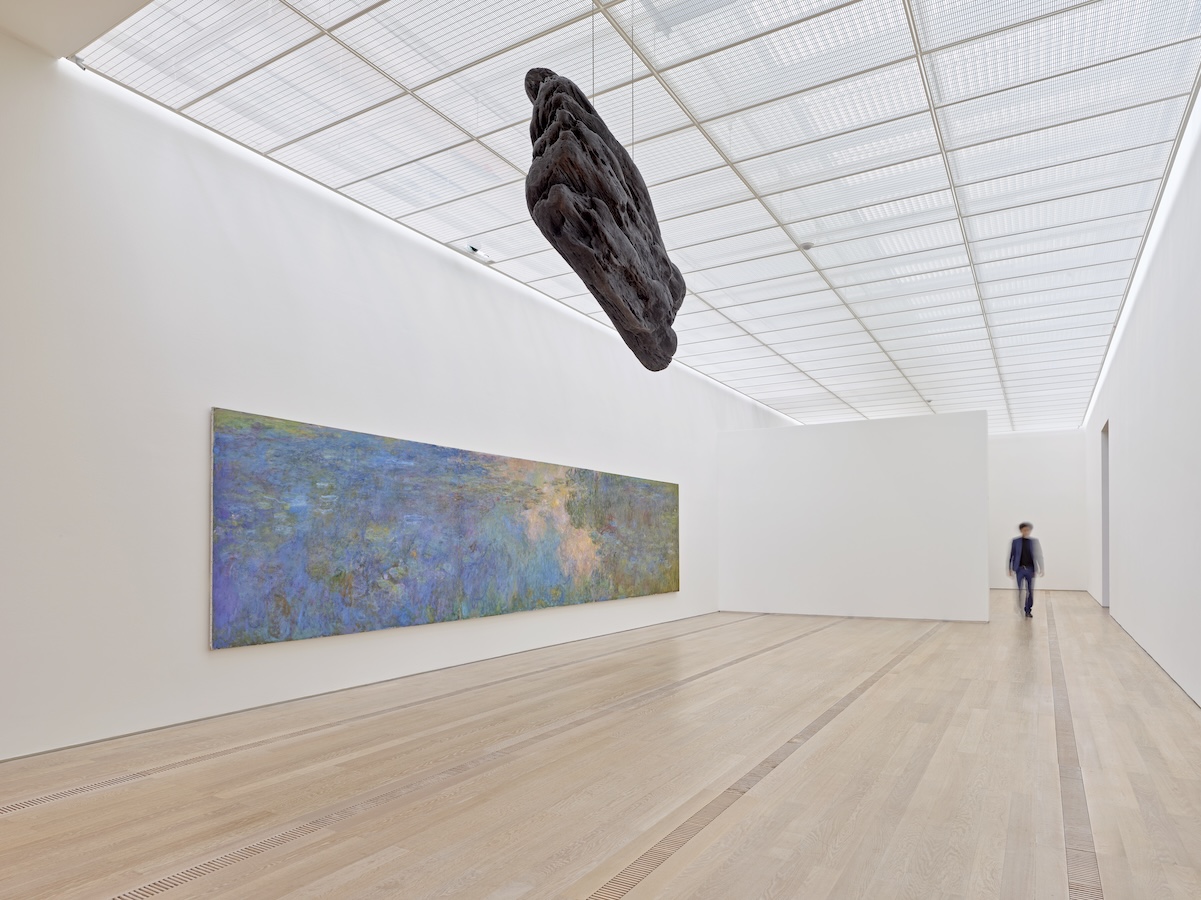 Installation View of Fondation Beyeler, Riehen/Basel, 2024, Koo Jeong A, “Boolgasaeu Boolgasali,” 2024,
Cast in bronze, dark patina, unique edition + 1 AP © Koo Jeong A, Photo: Mark Niedermann.
Installation View of Fondation Beyeler, Riehen/Basel, 2024, Koo Jeong A, “Boolgasaeu Boolgasali,” 2024,
Cast in bronze, dark patina, unique edition + 1 AP © Koo Jeong A, Photo: Mark Niedermann.
WW: Your “constructed situations” often challenge traditional notions of art ownership and commodification. How do you see these concepts evolving in the contemporary art market, especially in prestigious institutions like the Fondation Beyeler?
TS: I wouldn’t fully agree with that perspective because my work is also a form of commodification, albeit an immaterial one. It’s still a product that can be acquired and owned.
If we look back at the ’60s and ’70s, there were artists who actively tried to evade commodification. Conceptual art, for instance, attempted this by making works that seemed immaterial or too bureaucratic in their aesthetics, so that nobody would buy them, which was seen as a form of resistance. However, even those efforts all ended up becoming commodified. This illustrates that something becomes a product not by its inherent properties but because at least two people agree on it. So, if we agree that switching off the lights is a product, then it becomes one. It’s not just about the materiality or the intent behind the work but about the agreements and perceptions between people.
WW: Collaboration is a key component of the current exhibition. Can you discuss the dynamics of your interactions with other artists, poets, and philosophers for “Streaming From Our Eyes” and how these collaborations influenced your creative process?
TS: The “Streaming From Our Eyes” exhibition brought together around 30 artists, poets, and philosophers, many of whom are well-acquainted and have previously collaborated in various constellations, that’s key. What made this process particularly fascinating for me were the early conversations we had. It was unusual because artists were invited at the very beginning to exchange. Typically, such meetings occur at the end, during the installation phase, rather than at the start when everyone is still conceptualizing their works.
WW: How did you determine the placement of the artworks?
TS: It’s mostly about dramaturgical considerations, such as when a visitor experiences what and in which order, but also very practical ones, such as ensuring that works with sound are kept at a distance.
WW: The exhibition is described as a “living organism.” How does this organic, ever-changing concept align with or diverge from your previous works, and what new challenges did it present?
TS: The concept of a “living organism” deeply resonated with me because my work often follows a similar trajectory. For instance, in 2011, I curated one iteration of the exhibition “Felix Gonzalez-Torres. Specific Objects without Specific Form” at the MMK Museum für Moderne Kunst in Frankfurt. This exhibition featured an ever-changing display of works, which aligned well with my approach to dynamic and evolving art presentations. This experience was one of the reasons I was brought into the “Streaming From Our Eyes” project towards the end—to design the exhibition and work with the collection.
“The idea of a living, breathing exhibition is something that many of us in this group share,”
— Tino Sehgal
The idea of a living, breathing exhibition is something that many of us in this group share. It represents a contemporary approach to presenting art, one that allows for constant change and interaction. This concept aligns with my own practice and interests, emphasizing fluidity and perpetual transformation, moving towards an aesthetics of the living.
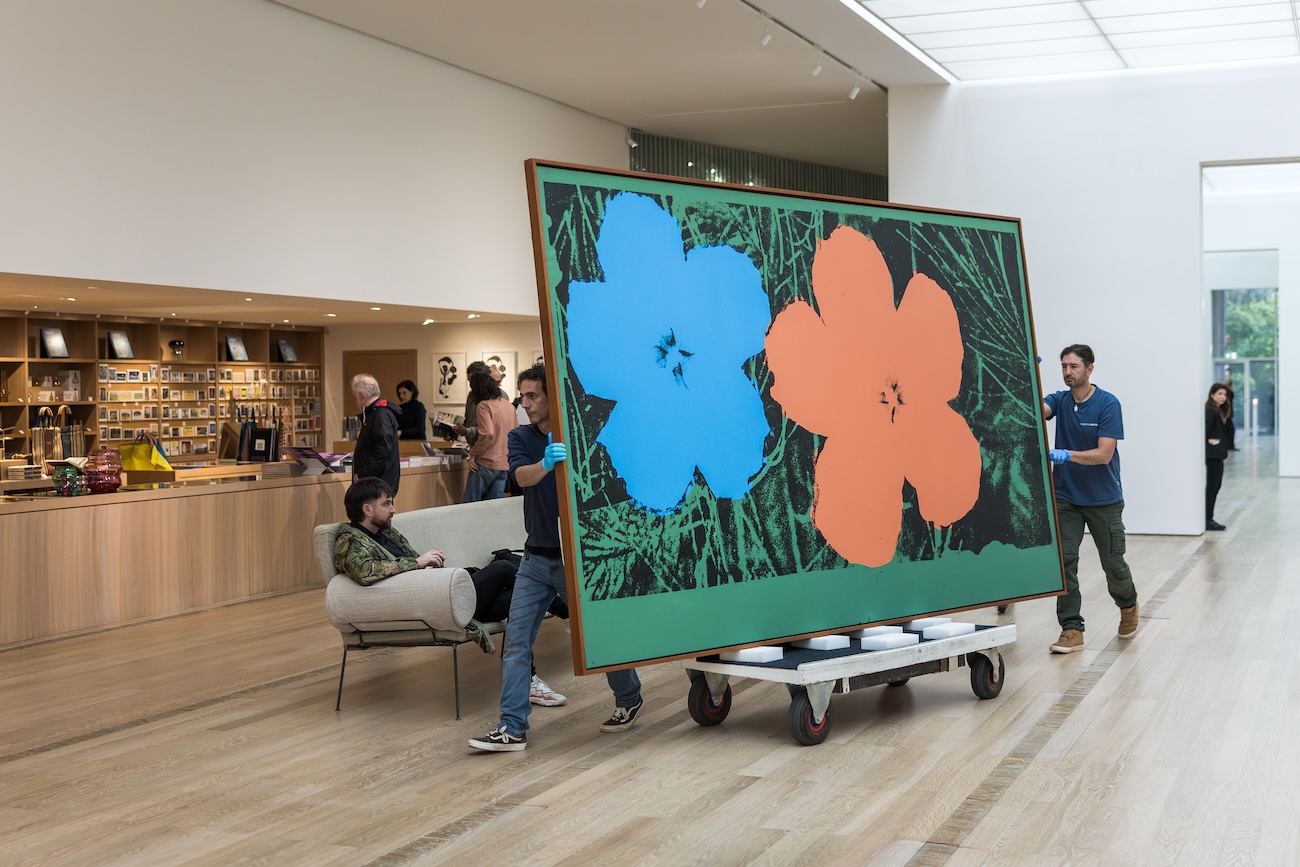 Foto: Stefan Bohrer, 17.5.24, Riehen: Sommerausstellung 2024 in der Fondation Beyeler in Riehen/BS. Die Ausstellung ist organisiert von der Fondation Beyeler und der LUMA Foundation. Stetige Transformation im Museum verändert die Ausstellung von Tag zu Tag.
Foto: Stefan Bohrer, 17.5.24, Riehen: Sommerausstellung 2024 in der Fondation Beyeler in Riehen/BS. Die Ausstellung ist organisiert von der Fondation Beyeler und der LUMA Foundation. Stetige Transformation im Museum verändert die Ausstellung von Tag zu Tag.
Navigating Artistic Intent in Collaborative Art Experiences
WW: Your work often invites the audience to become co-creators of the art experience. How do you balance this participatory element with maintaining your intended artistic narrative?
TS: You can think of my work as an algorithm. An algorithm provides a stable foundation, but iterations and outputs can vary significantly. Similarly, my work offers a structured framework within which participants can engage and influence the experience. I see this process as a feedback loop rather than a one-way transmission of directives. This approach also reflects our times, particularly with the rise of the internet, where people can comment, provide feedback, and actively participate in the creative process.
However, it’s crucial that this participatory interaction does not distort the work to the point of unrecognizability. The structure I create must remain discernible, much like a game where the rules are set, but how one plays within those rules can differ. This approach ensures that my artistic contribution remains clear and intact, even as the audience engages with and influences the work within defined boundaries. It is often about finding a balance.
WW: Given the transient nature of the situations you create, how do you document and preserve these moments for historical and educational purposes without compromising their ephemeral essence?
TS: The approach is somewhat akin to the George Balanchine Trust. When I collaborate with a museum, they can acquire the rights to present my works indefinitely. So, it is something that can be endlessly repeated like the one currently enacted at Beyeler, which is shown over a period of four months, but each iteration remains unique due to how the dancers play the game and the visitors react.
In terms of preservation, it relies on oral history and rule-based transmission. This process involves body-to-body transmission, similar to the functioning of the Balanchine Trust, requiring individuals who are both authorized and skilled in setting up these kinds of works.
WW: Considering your concept of the work as an algorithm, how much flexibility is there for deviations within these pieces?
TS: There is quite a bit of room for improvisation, interpretation, and deviation within my work. I don’t mind these variations as long as they don’t go beyond the outlines of the framework. At the same time, I am interested in their individual personalities to come through. It’s very much like a game—while the rules are fixed, the way you play within those rules is largely up to you. This flexibility ensures that each moment is a fresh and authentic experience while staying true to the original framework of the piece.
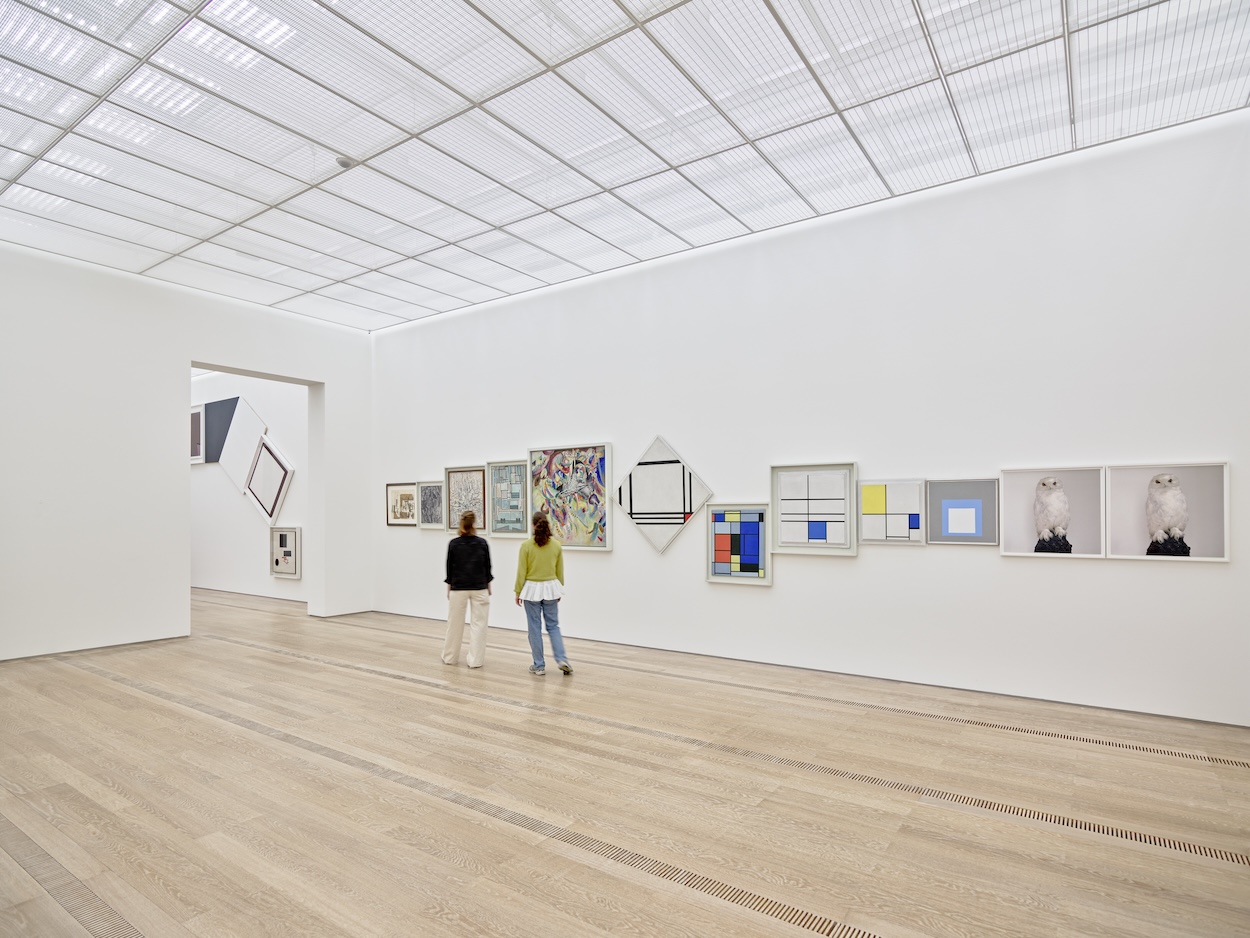 Fondation Beyeler, Riehen/Basel, 2024. “Collection on the Move” curated by Tino Sehgal.
© Roni Horn; Josef Albers and Anni Albers Foundation; Mondrian/Holtzman Trust c/o HCR International Warrenton, VA USA; Ellsworth Kelly; 2024, ProLitteris, Zurich. Photo: Mark Niedermann.
Fondation Beyeler, Riehen/Basel, 2024. “Collection on the Move” curated by Tino Sehgal.
© Roni Horn; Josef Albers and Anni Albers Foundation; Mondrian/Holtzman Trust c/o HCR International Warrenton, VA USA; Ellsworth Kelly; 2024, ProLitteris, Zurich. Photo: Mark Niedermann.






